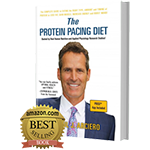Anyone starting a new exercise program wants all the hard work and sweat to pay-off in some way. Some of the more common pay-offs include body weight and fat loss, toned muscles, increased energy, better mood, and improved athletic performance.
However, statistics tell us that most people who begin an exercise program don’t receive these “pay-offs”. Why is this?
Many current exercise programs are to blame for this high failure rate because they are too intense and time-consuming and hold us hostage by expecting us to work-out like an “exercise-aholic” nearly every day of the week!
None of us should be pushing ourselves to the brink of physical exhaustion every day thinking, this is the ONLY way to achieve fitness, health and wellness.
While you may experience a few positive results in the short-term, it does little, if anything at all, to keep you motivated in the long-term.
Fortunately, in my last blog “RISE Up!”, I introduced the exercise program I developed (PRISESM) that has been scientifically proven to work, and is designed to fit easily into a busy lifestyle. So, I’m excited to coach you through each of the PRISESM exercise routines in the coming months.
I have already provided a sensible Exercise Intensity scale to help monitor your effort during exercise (see, RISE Up! blog). So, here I provide a few helpful strategies as you prepare for each of the PRISETM routines.
- What to Eat/Drink:
- What you eat (and drink) will either sabotage or boost your response to exercise. Remember… what you eat TRUMPS exercise ALL the time, so the goal is to have food intake and exercise work in synergy, not against one another.
- Begin each exercise session well-hydrated by drinking 16 ounces of water within 1 hour of starting.
- A great time to exercise is first thing in the morning but if this isn’t possible, schedule into your day as an appointment so you have to be there!
- For some people, eating a small meal (250-400 kcals) consisting of fresh vegetables or fruit, some lean protein, and whole grains 2-3 hours prior is helpful.
- If you are exercising for less than an hour, water is usually all you need to drink during the exercise routine. However, if you are exercising for more than an hour or in hot and humid environments then a sports drink containing glucose (sugar) and electrolytes (sodium, potassium, chloride, magnesium, etc.) is needed.
- What to Wear and Bring:
- Choose comfortable and appropriate fitting clothing and footwear for each type of exercise.
- The type (mode) of exercise will determine the appropriate clothing and footwear needed. For example, the exercise session may require; a bathing suit, cycling or running clothes, yoga or weight training clothes, layered clothing for outdoors, and a change of clothes.
- Be prepared for changing conditions and bring a stopwatch to stay on time.
- What you wear does make a difference.
- Warm-Up and Cool-down:
- Before starting each PRISETM exercise routine, perform a walk/jog warm-up for 5 minutes at a moderate pace (Intensity Level 4-5).
- Following this light walk/jog, perform a dynamic warm-up for an additional 5-10 minutes using the exercises shown below. This dynamic warm-up will prepare your heart, lungs, muscles, bones and joints for the exercise and help reduce your risk of injury. For a complete listing of Dynamic Warm-up exercises visit priseprotocol.com and Dr. Paul’s Training Journal.
- Notice: the warm-up is active and doesn’t involve static, gentle stretching. Your cool-down (or recovery) at the end of each exercise routine should include the static, gentle stretching for 5-10 minutes.

